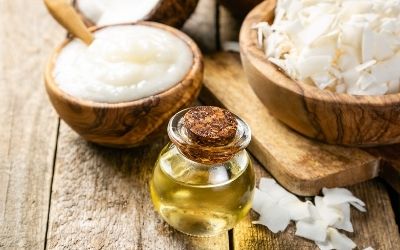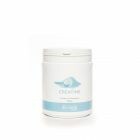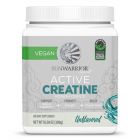CREATINE – Not a drug, not a steroid, but what then?
- By Patrick McCarthy (MSc)
- 18 May 2021


Creatine is probably the most well-studied ergogenic supplement today! Unfortunately, and I can say this from personal experience, it is one of the most misunderstood supplements as well.
So, how is it that the most exhaustively-studied supplement is also the most misunderstood?
Blog articles, newspapers and radio shows in which individuals with no relation to nutrition seem to think they are qualified to summarise the entirety of the evidence surrounding a supplement!
This results in statements like “It’s bad for your kidneys” or “Isn’t creatine a drug?”
By the way, if you’re wondering, the answer to both of those questions is absolutely not! So, in the following blog post, I am going to cover some of the following points:
- What is creatine?
- Where can we get creatine?
- What are the benefits of creatine?
- Should I take creatine?
- How to supplement with creatine

What is creatine?
Creatine is a natural molecule that we form in the body (mostly in the liver) and consume in our diet (mostly meat and dairy). It is made up of three amino acids, L-arginine, glycine and methionine.
If you are lost, allow me to simplify this. Amino acids are simply the building blocks of protein. Different protein sources contain varying sources of the 20 amino acids. From these, we can produce creatine ourselves in the body. As mentioned, it is already present in this form in meat, fish and dairy.
How does it work in the body?
Ok, now that we know what creatine is, let’s figure out how it exerts it’s many benefits in the body. It would take a while for me to cover the plethora of benefits and their mechanisms of creatine, so let’s hit the basics for now!
Creatine and high-intensity performance
Let’s start with high-intensity performance. We have three main energy systems in the body:
- Phosphocreatine
- Anaerobic
- Aerobic
The phosphocreatine system provides energy for maximal intensity bursts that last only for a couple of seconds. A good example is if you were to hop over a fence to grab a frisbee, and out of nowhere a guard dog started chasing you. You would need to run at your maximal speed straight away! However, both our anaerobic and aerobic energy systems are not capable of providing this energy quick enough, which is why we have the phosphocreatine system.
Creatine provides the raw materials for this high-intensity system.

Creatine and mass gain
This one is nice and easy. Creatine promotes the uptake of water in the muscle cell, which literally will result in larger-appearing muscles. This effect is actually quite pronounced and you’ll begin to notice results within a few short weeks (Source: NCBI). However, this does not necessarily mean that mass of muscles is increasing, although several studies have shown lean mass improvements from creatine too!
In a 2003 study, researchers reviewed over 100 creatine studies and found consistent weight, muscle and power output gains (Source: NCBI).
Creatine, Strength and power output
These are another widely-agreed upon group of benefits observed from creatine supplementation. This is achieved via the potentially-increased mass of muscles (covered above), as well as the ability to reach higher intensities in strength training (due to the increased availability of creatine in the muscle).
As mentioned, the research shows a “strong” improvement from creatine supplementation in power output. One review, consisting of 22 studies, showed an 8% improvement in the creatine groups compared to placebo, but an overall 22% improvement from baseline (Source: NCBI).

How do I consume more creatine?
In a typical omnivorous diet, an individual consumes approximately 1-2 grams of creatine a day. The only sources of creatine in the diet are animal products, so meat, fish and dairy.
A typical supplemental routine provides an additional 5 – 7 grams a day, which can help to achieve muscle creatine saturation on a consistent basis. While it is not required, a creatine-monohydrate supplement can be a great option for athletes or recreationally-active individuals.
How do I supplement with creatine?
It is recommended that you supplement with approximately 5-7 grams of creatine a day consistently. A lot of people have questions about creatine loading and wonder if it is necessary for optimal results. For this question, I’ve addressed both the literature and experts in my circle and can confirm that it is not necessary, but can be benficial in certain circumstances.
Creatine loading is basically a period of 5 – 7 days at the beginning of a creatine supplemental phase, wherein they consume 20 grams (4 x 5 gram doses). This can help to reach muscle saturation quicker, but isn’t necessary for someone that isn’t prepping for an upcoming competition.
Interestingly, a break period of 3 – 6 weeks has been shown to have little impact on creatine stores in the muscle and if cost or the burden of supplementing is a concern, this might be helpful information.

Wrap up
I hope this provided some insights to the seemingly elusive creatine, how it is formed, how it exerts its effects in the body and how we can consume more of it.
- Creatine is not a drug nor a steroid, it is a natural molecule produced in the body and consumed from the diet
- Creatine offers performance benefits in tasks that rely on the ATP-PCr system (<30 secs).
- Creatine’s benefits here were more pronounced in repeated bouts of short duration performance.
- Creatine may offer some benefits in aerobic exercise, although more research is needed here. As time of exercise increases >150 secs, the impact of creatine is reduced.
- If rapid improvements are required, a short-term loading phase may be beneficial, although it should be practiced with caution, if it is the first time supplementing.









